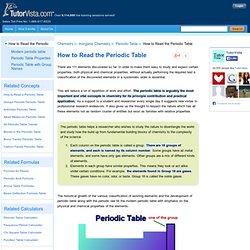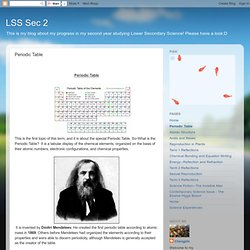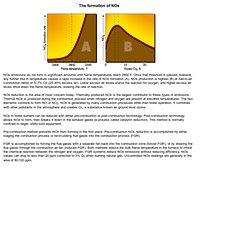

Classification of Matter. Matter can be identified by its characteristic inertial and gravitational mass and the space that it occupies.

On earth matter is commonly found in three different states: solid, liquid, and gas. Introduction A substance is a sample of matter whose physical and chemical properties are the same throughout the sample because the matter has a constant composition. It is common to see substances changing from one state of matter to another. To differentiate the states of matter at least at a particle level, we look at the behavior of the particles within the substance. Before we examine the states of matter, we will consider some ways samples of matter have been classified by those who have studied how matter behaves. Classifying Matter Evidence suggests that substances are made up of smaller particles that are ordinarily moving around. Atoms in turn have been found to be made up of yet smaller units of matter called electrons, protons, and neutrons.
A-Level. How to Read the Periodic Table. There are 111 elements discovered so far.

In order to make them easy to study and expect certain properties, both physical and chemical properties, without actually performing the required test a classification of the discovered elements in a systematic order is essential. This will reduce a lot of repetition of work and effort. The periodic table is arguably the most important and vital concepts in chemistry for its principle contribution and practical application. As a support to a student and researcher every single day it suggests new vistas to professional research endeavors. It also gives us the thought to respect the nature which has all these elements not as random cluster of entities but exist as families with relative properties. Periodic Table. Periodic Table This is the first topic of this term, and it is about the special Periodic Table.

Deionize Water Misconceptions. Deionize Water Misconceptions Name: Roger Status: other Grade: other Location: CA Country: N/A Date: January 2007 Question: I obtained a gallon of Deionized water from an aquarium shop to mix 1:1 with propylene glycol to use as a safer type of antifreeze.

I am now being told that deionized water is not only "Killer Water" if one was to drink it, (The fish are living in it) but will be very corrosive to the metals within my engine and cooling system. Replies: Roger- Automotive antifreeze needs at least three "components". Sorry I'm not sure right now what they use for corrosion inhibitor. If it's an old car so you can afford the risk of an experiment, good, but at least find one corrosion-inhibiting additive and try using it from the beginning. Whatever you do, don't add any chlorine or chlorides to your antifreeze.
PS- DI water isn't "killer water". It takes pointy-headed attention to make sure water is germ-free, and for industrial water, nobody is paid to watch that. Jim Swenson Roger, ENGINEERING - Pressure Conversion Tables. The Entire Chemistry Archive. The formation of NOx. NOx emissions do not form in significant amounts until flame temperatures reach 2800 F.

Once that threshold is passed, however, any further rise in temperature causes a rapid increase in the rate of NOx formation (A). NOx production is highest (B) at fuel-to-air combustion ratios of 5–7% O2 (25–45% excess air). Lower excess air levels starve the reaction for oxygen, and higher excess air levels drive down the flame temperature, slowing the rate of reaction. NOx reduction is the area of most concern today. Thermally produced NOx is the largest contributor to these types of emissions. NOx in boiler burners can be reduced with either pre-combustion or post-combustion technology.
Pre-combustion method prevents NOx from forming in the first place. FGR is accomplished by forcing the flue gases with a separate fan back into the combustion zone (forced FGR), or by drawing the flue gases through the combustion air fan (induced FGR). Welcome To Combined Cycle Journal. The steam-plant workshop held annually in the fall to address O&M challenges at gas-turbine-based cogeneration and combined-cycle facilities—with many lessons applicable to conventional fossil-fired stations as well—is gaining stature and appears well on its way to becoming one of the industry’s “must-attend” meetings.

It is conducted by the HRSG User’s Group, an organization best known for its spring conference and exhibition dedicated to the design, operation, and maintenance of heatrecovery steam generators. Last fall’s workshop, held in Las Vegas, was arranged as a two day-long meetings by HRSG User’s Group Chairman Robert Anderson, formerly of Progress Energy and now principal, Competitive Power Resources Corp, Palmetto, Fla (anderson@competitivepower. us). First day’s program focused on “Managing the Chemistry Program,” the second on “Improving Steam- Plant O&M.” Nine authorities presented tutorials in their respective fields of expertise. Recommended Feed Water Chemistry Limits. Chemical Engineering Community - Cheresources.com. Ankur's Blog Get technical tips and spreadsheets in Ankur's blog.

File Library Check out the latest downloads available in the File Library.